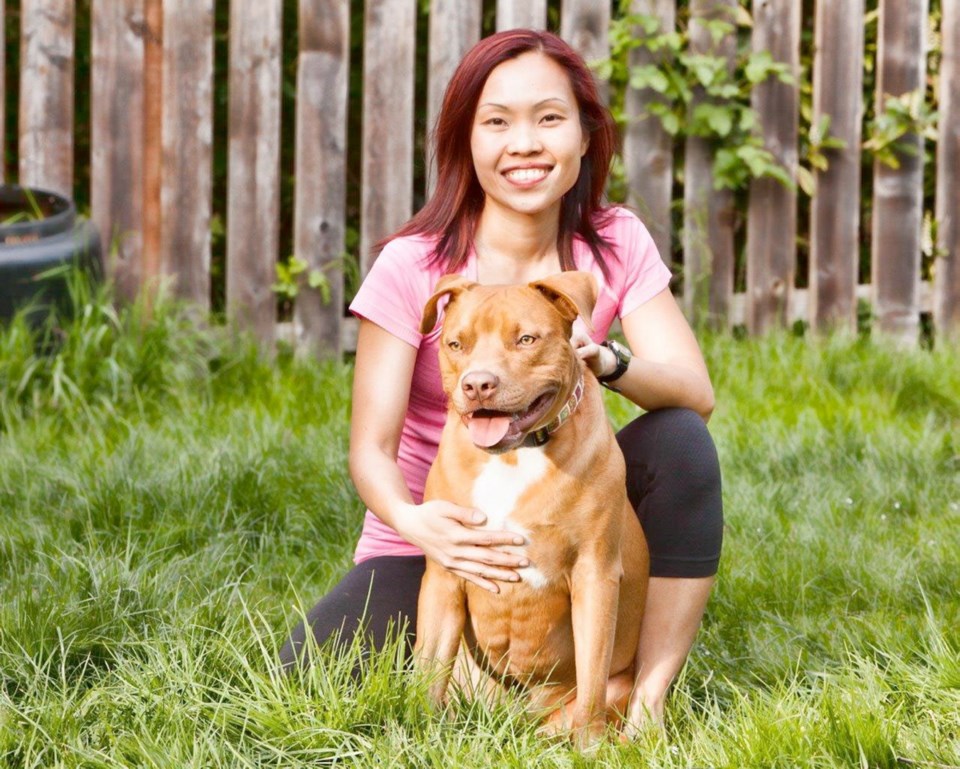As much as you might think taking your dog for a walk is as good for you as it is for your canine companion, this isn’t necessarily the case, a University of Victoria study has found.
The fitness level you achieve while taking Fido out for his daily walk is dependent on the dog’s behaviour and characteristics, the study, published by kinesiology graduate student Clarise Lim, suggests.
Some dogs like to sniff their way along a trail, some meander and others accelerate to unleash pent-up energy.
Only half of Victoria owners walk their dogs, Lim’s study found. And fewer than 60 per cent of those surveyed who walk their dogs do so at sufficient levels to achieve significant health benefits.
World Health Organization guidelines suggest adults aged 18 to 64 do at least 150 minutes of moderate-intensity aerobic physical activity per week, or at least 75 minutes of vigorous activity.
Studies have shown as many as 85 per cent of Canadian adults don’t reach the minimum recommended amount of physical activity. Lim, who works with Dr. Ryan Rhodes at UVic’s Behavioural Medicine laboratory, said most owners let their dog set the pace, or don’t keep up with their four-legged friends after letting them off-leash to run free.
“Dogs are innately athletic, even small breeds, like terriers,” said the longtime dog lover whose own pooch, Connor, a reddish-brown pit bull that she adopted, is no exception.
“He was full of energy when I got him and I got anxious and wasn’t sure how to handle it, so I thought: ‘Maybe I should take him out for a jog,’ ” she recalled.
The friendly dog, described by Lim, 37, as “just the sweetest thing,” loved the activity and soon looked forward to his daily outings, falling asleep and calming down when they were over.
“He was soon doing half-marathon distances with me,” the certified fitness instructor said, recalling their twice-weekly runs from Tillicum to Dallas roads and back.
“I finally had somebody to keep up with me — and a running partner who doesn’t talk too much.”
Lim, who is working toward her master’s degree in science and kinesiology, said hers is “a non-funded study born out of passion, rather than money.”
Her study examines the relationship between dog-walking behaviours and characteristics, owners’ sense of responsibility and attachment to their dogs, and the quality of their motivations.
Lim, who advocates responsible dog ownership to help dispel misconceptions, is now studying the effectiveness of using a dog as a catalyst to reap positive health benefits.
For her master’s thesis, she is seeking volunteer dog owners who are not meeting recommended physical activity guidelines to participate in a nine-week study that will include six scheduled group walks.
Lim’s new study will investigate the use of “behavioural and self-regulation strategies” such as using cues to form habits, the goal being positive physical activity outcomes.
Participants should be Victoria-based English-speaking adults aged 18 or over who own a healthy and friendly dog aged six months or older and want to either start walking their dogs, or improve their current walks.
Participants will receive dog-friendly incentives and be eligible for draw prizes, she said.
For more information or to participate in Lim’s study, visit uvic.ca/research/labs/bmed or email k9bmed@uvic.ca.



